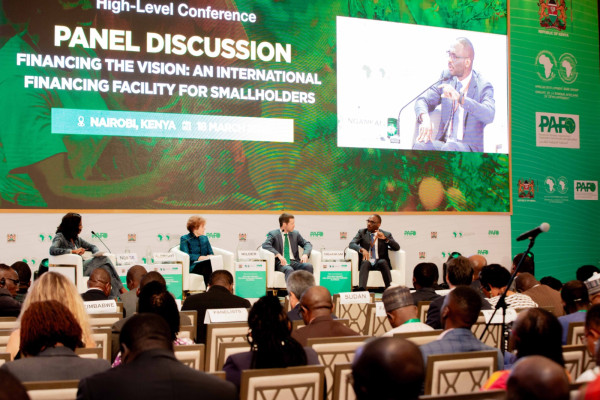The African Development Bank Group (AfDB) recently hosted a conference in Nairobi, Kenya, focused on financing Africa’s smallholder farmers. Global and African financial experts gathered to discuss the importance of aligning financial structures with the needs of small-scale farmers. These farmers, who make up 80% of the continent’s farming population, only control less than 5% of agricultural land.
During the conference, African Development Bank Group President Dr. Akinwumi Adesina highlighted the disconnect between agriculture’s significant contribution to Africa’s GDP (30%) and the minimal commercial bank lending towards the sector (6%). Adesina emphasized the challenges faced by smallholder farmers in Africa, including poor access to markets, finance, information, infrastructure, and inputs. He stressed the importance of collective action to address these issues.
A panel discussion at the conference featured experts such as Alice Albright, Brian Milder, and Jules Ngankam, who discussed practical designs for sustainable financing mechanisms in agriculture. They identified critical barriers to adequate financing, including risk misperceptions, high transaction costs, mismatches in loan products, lack of financial records and collateral, and inequitable value chain structures.
Milder shared a success story from Tanzania, where targeted interventions led to a significant increase in agricultural lending by Tanzania Commercial Bank. He also highlighted the need for solutions that make agricultural finance more attractive to investors, given the disparity between returns on government bonds and agricultural SME lending.
Albright emphasized the importance of clearly defining financing challenges, assessing risks, and building political will among governments to support smallholder farmers. She drew on her experience with the International Finance Facility for Immunization to illustrate the power of innovative financial instruments and strategic partnerships in addressing financing gaps.
Ngankam highlighted the importance of tailored financial products for different agricultural value chains and suggested risk mitigation strategies to unlock financing for smallholder farmers. The panelists proposed strategic recommendations such as tailoring financing approaches, developing risk-sharing mechanisms, strengthening digital financial infrastructure, and enhancing market access for farmers.
Overall, the conference emphasized the urgent need to mobilize resources to support Africa’s smallholder farmers and create an enabling environment for financial institutions to expand agricultural lending. By addressing the challenges and implementing strategic recommendations, the continent can establish a robust financing ecosystem that ensures capital flows where it is needed most.







